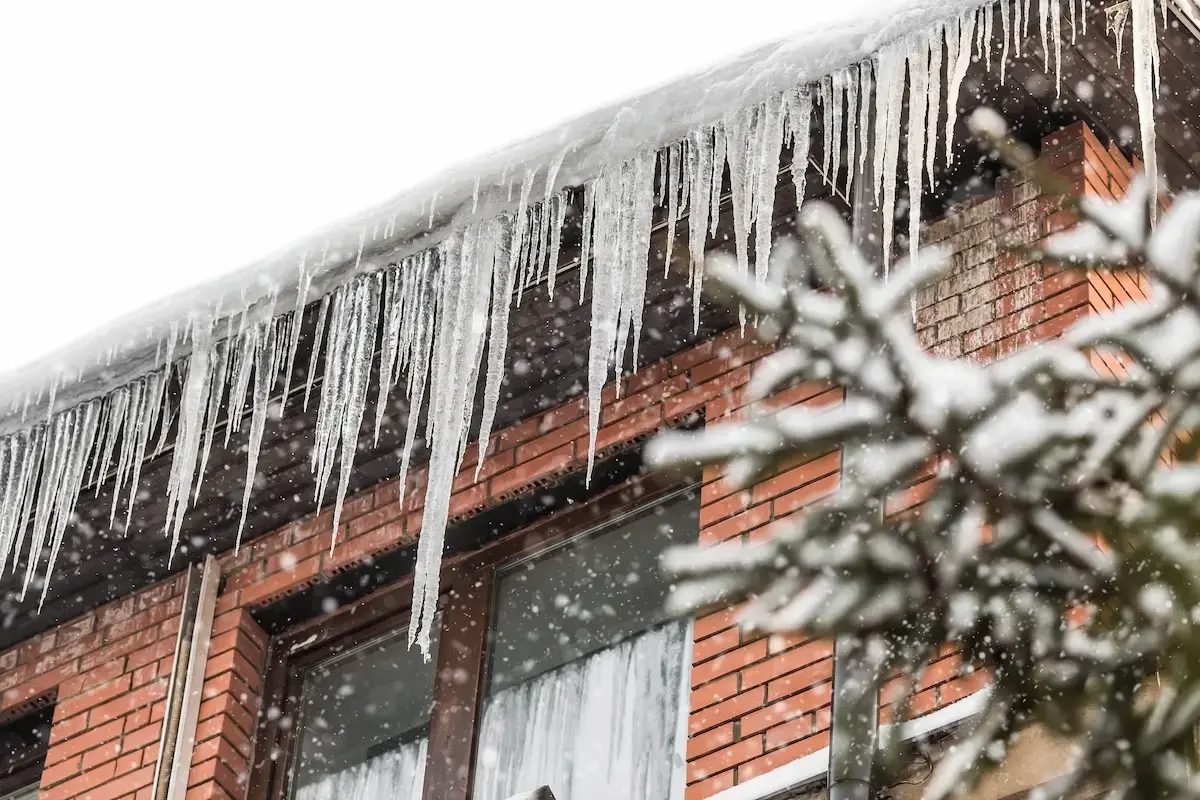When temperatures drop, roofing work doesn’t stop: it just shifts. The most successful roofing contractors know that winter preparation is the key to keeping projects safe, crews productive, and cash flow steady when cold weather sets in.
Whether you’re managing a few local jobs or running a full roofing operation, here are 10 proven ways to prepare your business for winter and hit the ground running when spring returns.

1. Winterize Your Equipment and Fleet
Cold weather can be brutal on compressors, nail guns, and vehicles. Smart roofing contractors service their equipment early, checking fluids, air hoses, and batteries before the freeze hits.
Store materials in temperature-controlled areas and use lubricants designed for low temps to keep tools performing reliably all season.
2. Choose the Right Cold-Weather Roofing Materials
Not every product performs the same in freezing conditions. Stock up on cold-weather shingles, sealants, and underlayments that maintain flexibility and bond properly in low temperatures.
Working with the right materials reduces callbacks and ensures your installations stay compliant and durable all winter long.
3. Secure Job Sites Against Snow and Ice
Before the first storm rolls in, roofing contractors secure open projects with tarps, heaters, and debris removal plans. Many also rely on weather tracking tools to plan around snow or wind events.
A protected job site means fewer delays, safer conditions, and better workmanship — no matter what the forecast says.
4. Prioritize Crew Safety and Comfort
Cold-weather roofing safety is non-negotiable. Adjust work hours to warmer daylight times, provide insulated gloves and footwear, and set up warming stations when possible.
A well-prepared crew works faster, safer, and with higher morale — even when temperatures are below freezing.
5. Offer Winter Roof Inspections and Repairs
Full roof replacements may slow down, but winter inspections and small repairs are in high demand. Promote services like ice dam prevention and leak repair to homeowners who want to prevent damage before spring.
These jobs keep revenue coming in and your brand visible in the off-season.
6. Diversify Winter Services
The best roofing contractors don’t hibernate; they adapt. Winter is the perfect time to expand into gutter cleaning, attic ventilation, or insulation upgrades. These complementary services build trust with clients and help fill your schedule during slower months.
7. Manage Estimates and Cash Flow with Confidence
Winter is the ideal time to tighten up your estimating process. Tools like OneClick Code give roofing contractors instant access to accurate, location-based roofing codes and permit data, reducing guesswork, preventing rework, and protecting profit margins all year long.
8. Stay Visible with Smart Marketing
When it’s too cold to climb roofs, it’s time to build your brand. Use email and social media to share winter roofing maintenance tips and cold-weather inspection offers.
Staying visible now keeps your business top of mind when homeowners start booking spring projects.
9. Train and Upskill Your Team
Winter is prime time for team development. Schedule safety refreshers, manufacturer certifications, or software training to help your crew work more efficiently and confidently when the busy season returns.
10. Plan Ahead for Spring Success
Finally, use the winter slowdown to analyze your year. Review estimates, margins, and code compliance data to find opportunities for improvement.
With better systems, stronger estimating tools, and clear goals in place, your roofing business will be ready to dominate the next season.
Final Takeaway
Winter doesn’t have to mean downtime for roofers — it’s a chance to strengthen your systems, train your team, and get ahead.
By preparing early and using technology like OneClick Code to keep your estimates accurate and compliant, you’ll work faster, smarter, and with confidence, no matter how cold it gets.

Experience the power of accurate, automated building code data. Try OneClick Code Today!

FAQs - Frequently Asked Questions
Q: Can roofing contractors work effectively in winter, or should we pause jobs until spring?
A: Yes — roofing work can continue in the winter, but it requires extra planning. Cold-weather conditions affect materials, work schedules, safety, and uptime. Properly winterizing equipment, using cold-weather rated materials, adjusting crew hours, and factoring in weather impacts can keep projects moving.
Q: What are some of the key materials and installation issues unique to cold-weather roofing?
A: In cold weather, asphalt shingles may become brittle (often below about 40 °F/4 °C), so installers need special handling or alternate materials. Flashing, sealants, and underlayments must be compatible with low temps and freeze–thaw cycles. Proper attic insulation, ventilation, and snow/ice-management systems (like heat cables or snow guards) also become more important.
Q: What should roofing business owners do now to ensure crews stay safe and projects stay profitable during cold weather?
A: Key steps include: providing winter PPE (insulated gloves, boots, high-grip footwear), adjusting start times to daylight/warmer hours, setting up warming shelters or break areas on site, prepping job-site protection (tarps/heaters), creating buffers in schedule for weather delays, keeping cash flow and estimating tight, and diversifying services. Safety + efficiency = profitability in winter.
Q: How does cold weather impact estimating and roofing code compliance?
A: Cold weather brings additional variables: material limitations, extra labor time, weather-related delays, and specialized equipment. Estimating must account for these. Also, local building codes and manufacturer installation requirements remain in force, even during winter. Using a tool that tracks local code changes and provides manufacturer requirements (such as OneClick Code) helps avoid non-compliance and protects margins.
Q: What winter services can roofing contractors promote to maintain revenue during slow months?
A: Beyond full roof replacements, contractors can promote: winter roof inspections, leak repair, ice dam prevention, attic insulation/ventilation upgrades, gutter/downspout cleaning and maintenance, emergency repairs after storms, and winter-grade roofing upgrades. These help maintain cash flow and keep the business active.
Q. What are the most common winter roof failures, and how can contractors prevent them?
A: Some of the typical winter-related failures are: ice dams (from poor insulation/ventilation), shingle cracking or granule loss from freeze–thaw, clogged gutters/downspouts causing backup and leaks, flashing failures exacerbated by snow/ice loads. Preventive actions include ensuring attic insulation & ventilation are correct, cleaning gutters before freeze, trimming overhanging branches, securing flashing/seals, and scheduling inspections in the fall.


